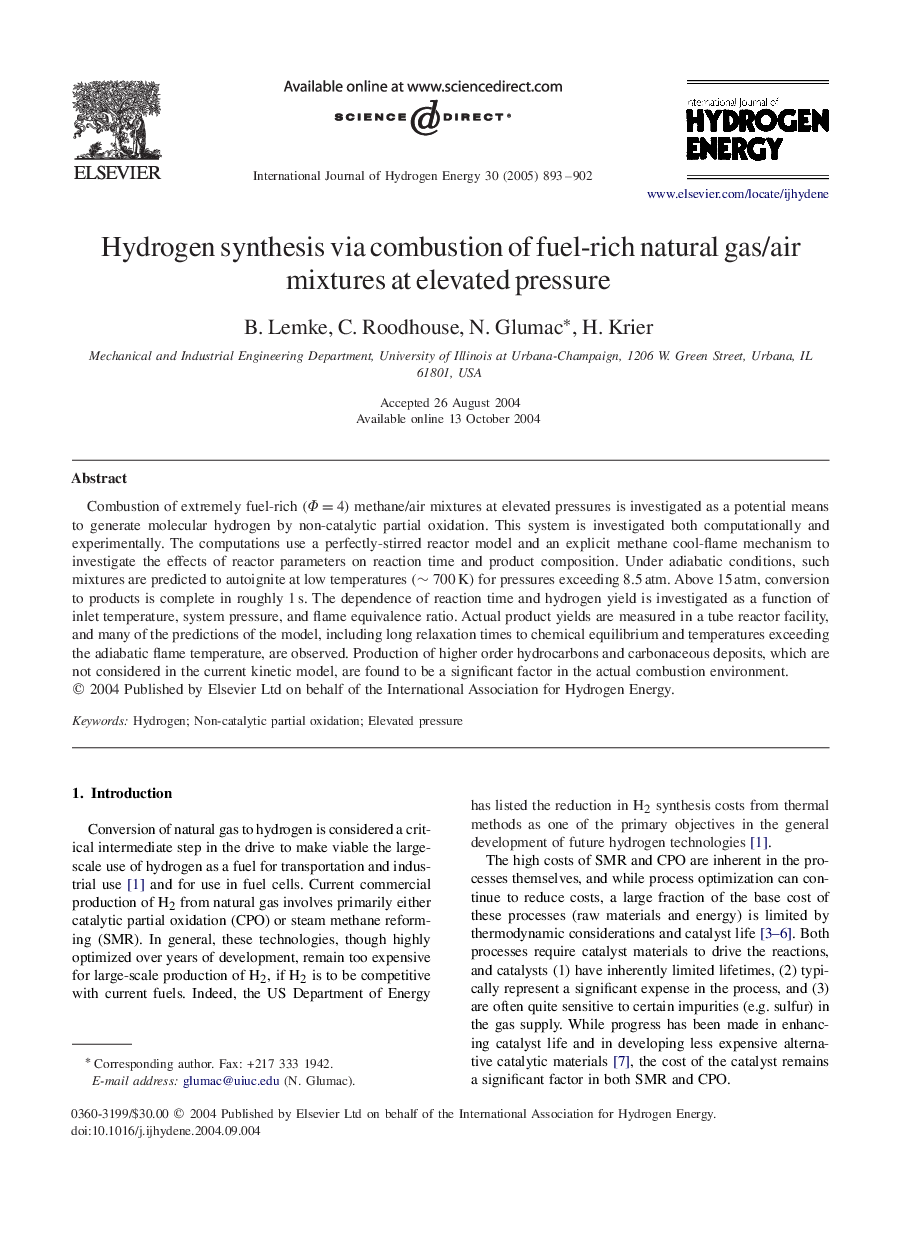| Article ID | Journal | Published Year | Pages | File Type |
|---|---|---|---|---|
| 9759283 | International Journal of Hydrogen Energy | 2005 | 10 Pages |
Abstract
Combustion of extremely fuel-rich (Φ=4) methane/air mixtures at elevated pressures is investigated as a potential means to generate molecular hydrogen by non-catalytic partial oxidation. This system is investigated both computationally and experimentally. The computations use a perfectly-stirred reactor model and an explicit methane cool-flame mechanism to investigate the effects of reactor parameters on reaction time and product composition. Under adiabatic conditions, such mixtures are predicted to autoignite at low temperatures (â¼700K) for pressures exceeding 8.5 atm. Above 15 atm, conversion to products is complete in roughly 1 s. The dependence of reaction time and hydrogen yield is investigated as a function of inlet temperature, system pressure, and flame equivalence ratio. Actual product yields are measured in a tube reactor facility, and many of the predictions of the model, including long relaxation times to chemical equilibrium and temperatures exceeding the adiabatic flame temperature, are observed. Production of higher order hydrocarbons and carbonaceous deposits, which are not considered in the current kinetic model, are found to be a significant factor in the actual combustion environment.
Related Topics
Physical Sciences and Engineering
Chemistry
Electrochemistry
Authors
B. Lemke, C. Roodhouse, N. Glumac, H. Krier,
